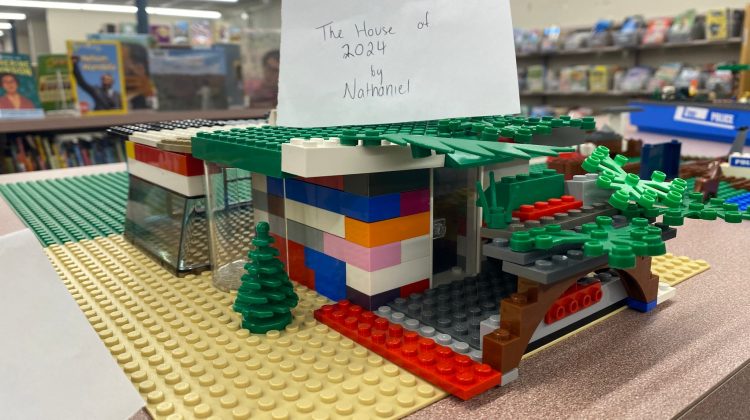What do you think of when you think of a town hall? A home? A park?
Those are the sorts of questions being posed by Calvin Anton, a graduate student at the University of Massachusetts, who is hosting a series of urban planning forums at Peabody’s libraries. But the forums aren’t for adults — they’re for kids, specifically those in third through fifth grade. Anton has already held one forum, and another is slated for next month at the West Branch Library.
Anton, who grew up in Peabody and attended the city’s public schools, explained that the forums sprung out of a class project. For the class, Anton had to create a “deliverable” related to planning, ultimately opting to write a planning-themed children’s book. But Anton wanted the impact of his book to go beyond something that would just sit in a classroom. With that in mind, he reached out to the principals of each of the city’s eight elementary schools and was able to pull an assembly together at the South Memorial Elementary School.
The session at the library was an extension of the work Anton did at South Memorial, but in a setting that allowed for more hands-on education.
“Planning for the most part, regardless of your age, (is) pretty misunderstood,” he said. “Not much is known about it at all, point-blank, period.”
Despite the complexity of the material, Anton said he felt meeting the kids on their level helped him break through.
“Honestly, I’m so stoked that it had such a good impact on the kids and they seem to really enjoy it,” he said. “For me, it’s really enriching to go back out into the community.”
Anton described his book as being written from the vantage point of someone looking out the window while sitting in the backseat of a car traveling down a city’s main street. The passenger notices various landmarks — areas of the city that a planner laid out.
At the library sessions, with the book as a guide, students use Legos to design their own vision of classic landmarks that exemplify urban planning.
“What a town hall means to someone can drastically vary from somebody else right next to them,” he said, adding that the exercise got kids thinking about how to “interpret spaces they interact with on a daily basis.”
Anton said he was struck by the collegiality the students showed during the session, working together, as planners might, to craft their specific visions. And, almost every student incorporated people into their space, building with them in mind without Anton suggesting they do so.
In a fitting mirror of development in 2024, some students opted to mix uses — adding a store on to the home they had already constructed or vice versa — while others sought to keep them totally separate, tearing down the structure they had constructed to put a new one in its place.
“I thought that was interesting… do they see things working together, do they see them needing to be separate, which I thought was valuable, because… (it) gives an idea of how people would use a space or how they envision a space being used,” Anton said.
The ultimate goal of both the assemblies and the sessions is to create a greater awareness of planning and the critical role it can play in the life of a city, Anton said. Yet, planning often remains a behind-the-scenes effort, with any efforts typically credited to local elected officials.
To Anton, proactively creating an awareness among young people of what, exactly, a planner does, can give them a better grasp on how the place they live works for them.
“These kids are rather young… but at the same time, I don’t think it’s too early,” he said.

